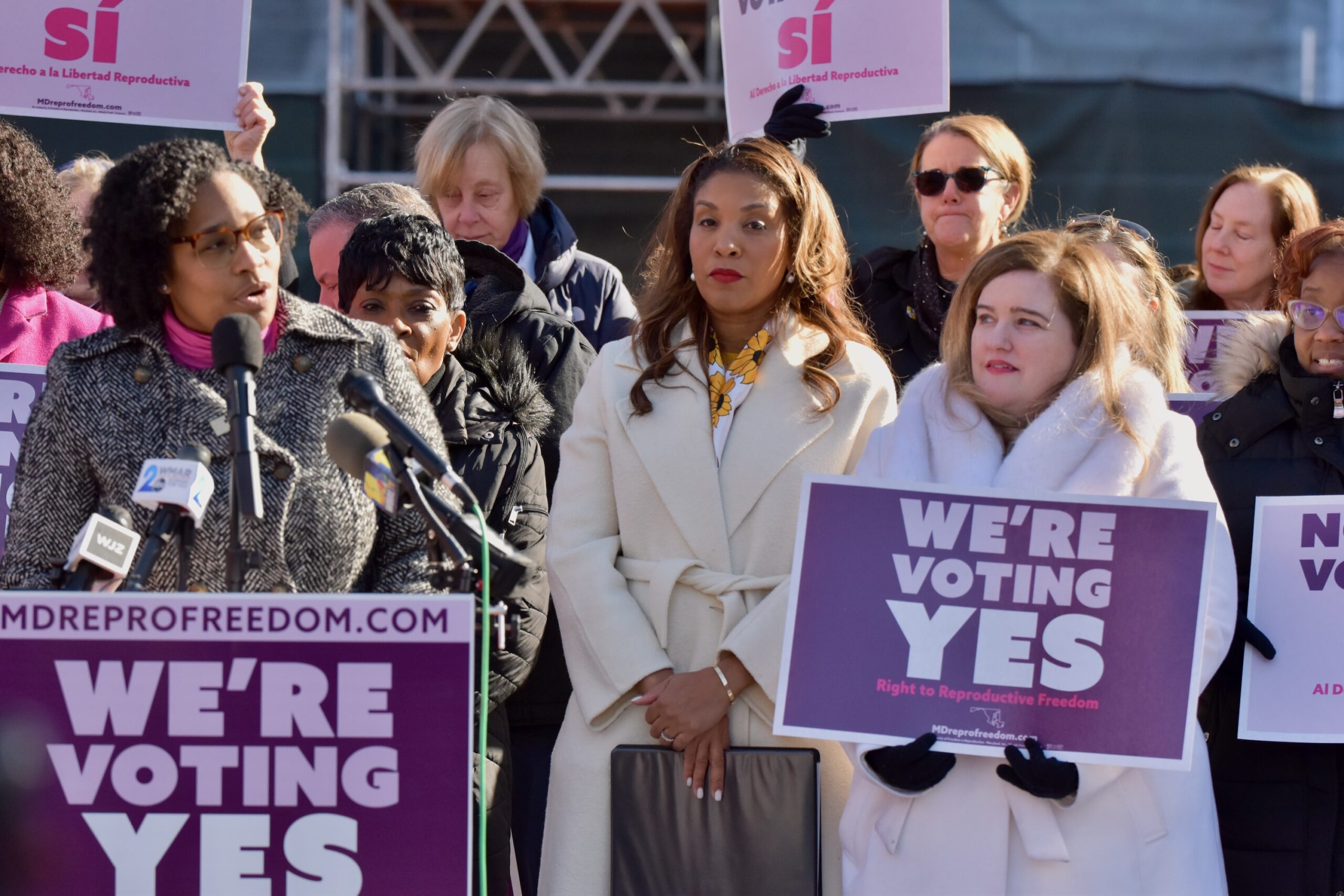Child Care Providers Still in ‘Survival Mode,’ Parents Wait For Child Care Aid

With 751 fewer child care providers in Maryland 18 months after the COVID-19 pandemic forced many to close or scale back, providers say they are operating in “survival mode” still, struggling to find qualified workers and to offer competitive wages and health benefits.
“We are the workforce who take care of the workforce,” Carolina Reyes, owner of a bilingual child care center in Prince George’s County, told state lawmakers Wednesday in a virtual meeting on the impact of the pandemic on child care services.
Prince George’s County had the biggest loss of child care centers with 141 fewer providers than in January 2020, according to the Maryland State Department of Education. Anne Arundel and Baltimore each have 85 fewer child care providers.
“This is one of the richest states in the country, we need to really invest in…child care — it’s part of the economy, it’s part of commerce, we need to connect the dots,” echoed Chris Peusch, executive director of the Maryland State Child Care Association.
One of the biggest challenges in Maryland is finding qualified people to hire, because the state has specific staff requirements, including having a Child Development Associate (CDA) credential and experience working with children. Around 75% of providers are experiencing workforce shortages, Peusch said.
And when they do find qualified workers, child care providers have to compete with the public school system and retail employers like Target, Starbucks and Kohls, which offer a lot more money per hour than child care providers can, Peusch said.
“They’re going to go to public schools because we cannot compete with the benefits package they provide. We cannot compete with the hourly wage that they provide,” said Holly Frazer, who owns a child care center in Washington County.
Frazer also decried MSDE adding more qualification requirements for child care staff.
“Instead of laxing up or helping or keeping things the same, they’re piling on [requirements], Frazer said. “We are not going to be able to find staff to work for the wages that child care makes,” she said.
The average child care center teacher earns $26,000 a year while a child care center director makes an average of $41,000, according to Peusch. And most providers cannot afford to offer health benefits to their employees.
Frazer also criticized local health departments for having different standards for child care centers and the public school system. Frazer said that if a child tested positive for COVID-19 in her child care center, the local health department will say that child would have to be quarantined for 14 days, but will tell public schools that they only need to quarantine a student if that student has COVID-19 symptoms.
“So what are parents doing? They’re leaving, they’re going to the neighbor down the street…or they’re getting their kids in public school programs, even if that’s not where they want them to be,” she said.
Out of the 7,000 child care centers that have opened since the pandemic, there have been only 24 cases of COVID-19, according to Peusch.
Although 97% of licensed child care providers are open, around half are operating with half as many children as they had, which makes it even more difficult to pay for fixed costs and other expenses.
Kim Ritchey, who owns a child care center in Washington County, said that she served up to 86 children each day, with more on the wait list, before the pandemic. But now she serves 50 children a day and only has two children on her wait list.
“I don’t know where all the kids are,” she said. All child care providers in Washington County are operating at 50% or below in capacity, she said.
MSDE is using $502 million from the federal American Rescue Plan Act to help stabilize the child care industry and support parents to meet the cost of child care, according to Justin Dayhoff, MSDE’s assistant state superintendent for financial planning, operations and strategy.
So far, MSDE has distributed $155 million to over 5,100 child care providers, he said.
President Biden’s $1.75-trillion “Build Back Better” bill — a blueprint to overhaul the country’s health care, climate, education and tax laws — would provide monthly payments to families with children, as well as subsidies up to 7 percent of income to most families for child care.
But relying on emergency federal funds is not sustainable, child care advocates said. Child care providers need continuous state funding to survive, Peusch said.
Child care advocates also criticized payment delays and unresponsiveness from the state’s Child Care Scholarship Program, which provides low-income families with financial assistance. The cost of childcare is usually the second or third largest household expense for families, according to the Maryland Family Network.
There’s a “deep and profound misunderstanding” among some families about how to apply to the program, especially among the immigrant community, Reyes said. “I invite you to call that 1-800 number today, and you can see how difficult it is for us to be able to talk with a human being,” she told lawmakers.
In one family a parent lost a job because they could not get a child care scholarship approved by the time the parent had to start work, said Tracey Clay, a child care provider in Montgomery County. These delays also affect child care providers, since they too have to wait an extended period of time to obtain the scholarship money, Reyes said.
Reyes suggested that MSDE create a video that outlines step-by-step how to apply for a child care scholarship and provide a toll-free number that ensures families and care providers can reach a person who can help.
Del. Jared Solomon (D-Montgomery) suggested simplifying the child care scholarship application by removing some questions.
Steven Hicks, MSDE’s assistant state superintendent for early childhood, said MSDE has established online portals to make it easier for families to apply for child care assistance and to make it easier for providers to apply for aid.
“It’s really exciting to hear about the portal…but what I hear a lot from not only the providers but from the families that I talked with is that the process for getting the scholarship is still really difficult,” Solomon said.
To bolster the child care workforce, Del. Ariana B. Kelly (D-Montgomery) suggested automatically offering child care scholarships to child care workers for their own children. Sen. Malcolm Augustine (D-Prince George’s) highlighted that that the next generation of child care industry leaders will likely be from the immigrant community, especially Spanish speakers, which is something to keep in mind for outreach, he said
Sen. Joanne C. Benson (D-Prince George’s) said the state needs to do more for child care providers.
“We have all of this money coming into the great state of Maryland, and I’m just trying to figure out why isn’t it that we aren’t utilizing it where it belongs — and that’s to ensure that every child in the great state of Maryland has a healthy start,” Benson said.




 Creative Commons Attribution
Creative Commons Attribution